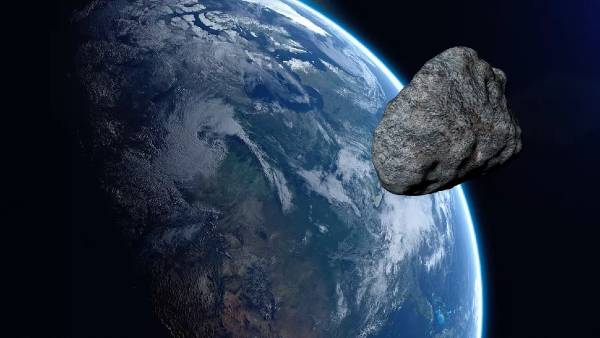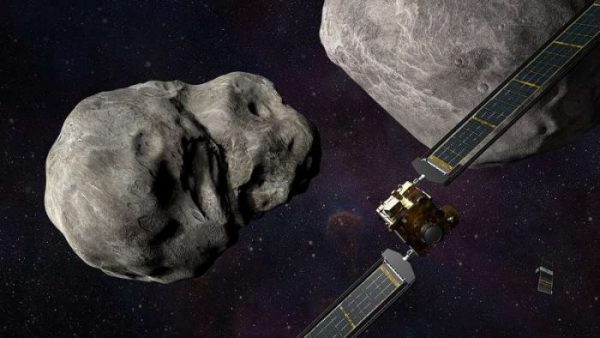The dinosaurs are only extinct because they didn’t build a space agency, according to an ancient joke. The inference, of course, is that, unlike our reptilian ancestors, we humans, with our six-and-a-half decades of flying expertise, would be able to save ourselves from an approaching asteroid attack on Earth.

However, while we have accomplished incredible things since Sputnik launched the space age in 1957, very little effort has gone into developing asteroid deflection technologies thus far.
We’re dreadfully inexperienced in this field, and we’ve never put our abilities to the test outside of Hollywood dramatisations. That, however, is about to change.
Is China Going To Launch An Asteroid Deflection Test?
Last week, Wu Yanhua, deputy chairman of the China National Space Administration (CNSA), stated that an asteroid deflection test will be conducted as early as 2025, as part of a bigger asteroid monitoring and defence system that the CNSA is constructing.
The surveillance system will include both ground-based and space-based devices for cataloguing potentially dangerous near-Earth objects.
Why Are Monitoring Systems So Important In This Launch?
Monitoring systems are particularly crucial since the sooner an asteroid is detected, the easier it is to divert it.
A faraway asteroid could be redirected with just a little touch to miss Earth; the later an asteroid is discovered, the more difficult it will be to reverse its course.
Read: What is the goal of the DART mission?
Should We Worry About The Asteroids Hitting Our Planet?
We can rest easily knowing that space organisations all across the world have constructed effective asteroid monitoring systems and catalogued hundreds of thousands of solar system objects.
None of them are likely to harm Earth in our lifetimes (the highest-risk object, 2010 RF12, has a 4.8 percent chance of hitting the planet in 2095).
A fireball akin to the Chelyabinsk meteor in 2013 would be caused by this 7-meter asteroid. Still, there’s a chance there’s more out there that we haven’t seen, so CNSA’s new monitoring initiative is a good addition.
The smallest objects are the most difficult to spot when it comes to asteroid hunting, but they are unlikely to cause harm, much like the shooting stars that dart harmlessly through the sky every night of the year.
On the other hand, the largest asteroids in the universe are capable of inflicting mass extinction, yet they are easy to see and monitor.
The most dangerous asteroids are the middle-sized ones, which are large enough to cause localised harm but small enough that we might not see them in time.
Read more: Why is Nasa smashing a spacecraft into an asteroid with the Dart mission?
How Can We Deflect An Asteroid?
The simplest approach is to simply hit an asteroid really hard. Getting a close look at asteroids can also help us figure out how to best deflect them.
Bennu, a near-Earth asteroid recently observed by NASA’s OSIRIS-Rex probe, was discovered to be a loose, gravel pit of an asteroid.
Deflecting such a target would necessitate a different approach than deflecting a homogeneous, solid lump of rock.
Potential methods include a gravity tractor (gently tugging at the asteroid with the mass of a spacecraft orbiting it) or painting the asteroid’s exterior white if there is adequate time and warning (changing the way the asteroid is heated and cooled by the Sun, slowly affecting its orbit via the Yarkovsky effect).
What Is CNSA’s New Monitoring Program?
The CNSA’s new monitoring programme will be accompanied by an engineering effort to develop and build a high-thrust rocket capable of carrying a kinetic impactor, which is a payload designed to punch an asteroid with enough force to alter its orbit. The asteroid they plan to test the impactor on hasn’t been named yet.
Also read: What is the goal of the NASA’s Psyche Mission?
How do Nasa And ESA Want To Deflect An Asteroid?
NASA and the European Space Agency (ESA) are also taking the first steps towards constructing kinetic asteroid defence systems.
The DART mission, which launched in November, will seek to alter the orbit of Dimorphos, a small moon orbiting the asteroid Didymos, by slamming into it at high speed.
Because this is the first test of its kind, the change in trajectory is likely to be minor.
This is one of the main reasons DART chose a moon rather than a single asteroid: it will be easier to measure the minute variations in Dimorphos’ orbit using the nearby asteroid Didymos as a reference point.
In September of this year, the DART mission will collide with Dimorphos, followed in 2027 by Hera, an ESA mission that will observe the aftermath of the collision up close.
Conclusion
An asteroid impact poses a minor existential threat in the short term, but it is almost certain in the long future. As a result, asteroid monitoring systems and deflection tests like DART and the CNSA’s upcoming impactor project are critical first steps in keeping Earth safe and avoiding extinction.
